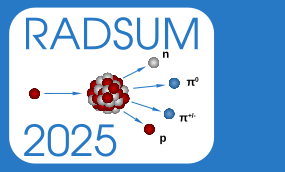Speaker
Description
The Paul Scherrer Institute (PSI) operates the world's most powerful proton accelerator. Currently, all magnets are resistive and require about 2.6 MW of power. Due to the high level of radiation, about 20% of the magnets are designed to be radiation resistant.
Energy efficiency is nowadays a crucial concern for the accelerator community, prompting an exploration of alternative solutions to resistive magnets. Superconducting magnets could be a viable, energy-efficient alternative for both primary and secondary beamlines of large accelerator facilities.
To investigate this possibility, a superconducting demonstrator magnet based on ReBCO coils is planned to be placed in an irradiated environment representative of the machine. The aim is to study the effect of radiation both on the HTS conductor itself and on all the magnet components surrounding it. A first measurement of ambient radiation in the PSI accelerator was performed on two HTS tapes and we present the results. In parallel, the conceptual design of a superconducting Nb-Ti transport solenoid to be installed in the new HiMB secondary muon beamline was realised and the impact of radiation on the operating point was simulated.
